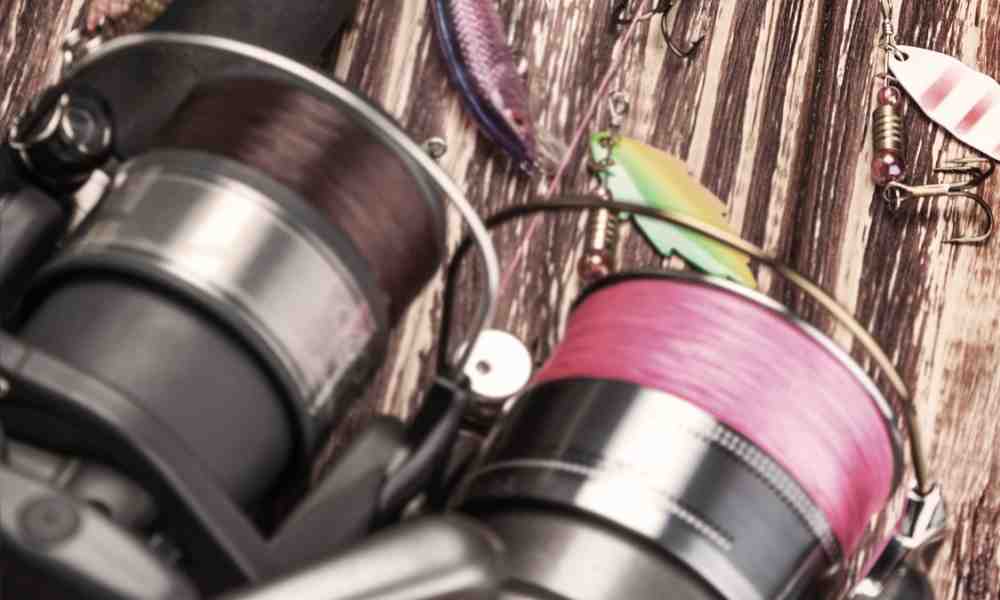Types of Fishing Line

A fishing line is used for angling. The most important features to be considered are its length, material, and weight. The old fishing lines were made up of natural material like and were expensive.
Most modern lines are made from nylon, fluorocarbon or Dacron. The important things which are determined by angler include breaking strength, knot strength, UV resistance, softness, stretch, resistance to any damage/cut, and visibility.
Fishing line is famous for having many types. The top rated fishing lines include braid and monofilament. However, there are many other good lines used for fishing. The types of fishing lines are discussed in detail below:
Braid
The braid fishing line is made up of many thin and durable fibers. Braid is strong because of its diameter, and it is also stronger than monofilament fishing line. It can sink in the water fast and can trolls deeper than monofilament.
It has no memory issues, so loops aren’t a problem. Braid can be used in the sunlight, but as it is made up of nylon which can break when used in sunlight, so it is good to use new line every year. This fish line doesn’t stretch at all so fish can be caught easily.
No doubt, braid has many advantages, but it also has many shortcomings. It is very slippery, so to hold the line many users tie knots to it. Further, because it is very strong, you must have sharp knives and scissors with you.
Fish can recognize braid, so many of you who are used to hiding the line from the fish would not prefer this kind of line. Braid also has little abrasion.
Monofilament
It is made up of nylon. Further, unlike braided lines, it is a long continuous filament. It is one of the most widely used fishing lines and found in a variety. The variety can be in term of strengths and colors take place. It is cheaper than other types of fishing line.
It can stretch to absorb shocks and is abrasion resistant. It is uniformly round in cross section. You can easily tie knots. It has many shades, but the blue one is the most popular because disappears and it is difficult for the fishes to recognize it.
Fluorocarbon line
It is a perfect material for the person going fishing as it completely hides under water and is abrasion resistant. However, few brands also sell fluorocarbon as main fishing lines.
Fluorocarbon lines are invisible and do not distort the light thus useful in clean water. It is also the popular choice when to fishing in the thickest cover or the bottom.
Its molecules are more tightly packed, so it provides better communication between the two ends of the lines. It can also be used in sunlight and UV has no effect on it.
Unlike monofilament, it also does not absorb water in it, so its strength, sensitivity, and handling remain same in underwater as on dry place. It’s hooking power is stronger than the nylon’s ones.
It has more memory than other super lines and monofilaments thus it’s hard to manage. It shock strength lies in between the monofilaments and wired fishing lines.
It sinks faster than mono, so it is not the right option for the fishing on top water and small baits. You also need to moisten it for tying the proper knot.
Wired fishing line
It is used for toothy fish that may include tuna or mackerel. You may buy it in a single strand or braided varieties. It is also employed in deep depths fishing and requires special spools. It’s a strong fishing line.
Thus, it is very hard for a fish to cut it. Its convenience is that it can cut the sea object that comes in its way. It comes in various materials. They are generally metals like nickel-copper alloy or some stainless steel material.
The advantages of wire fishing lines are numerous. They are light weighted and of generally very small diameter.
The wired fishing line needs several types of equipment. It needs reels of trolling wind level. Along with a metallic spool to fit wired line, it also requires a rod with hardened supports so that roller tip wouldn’t cut it.

